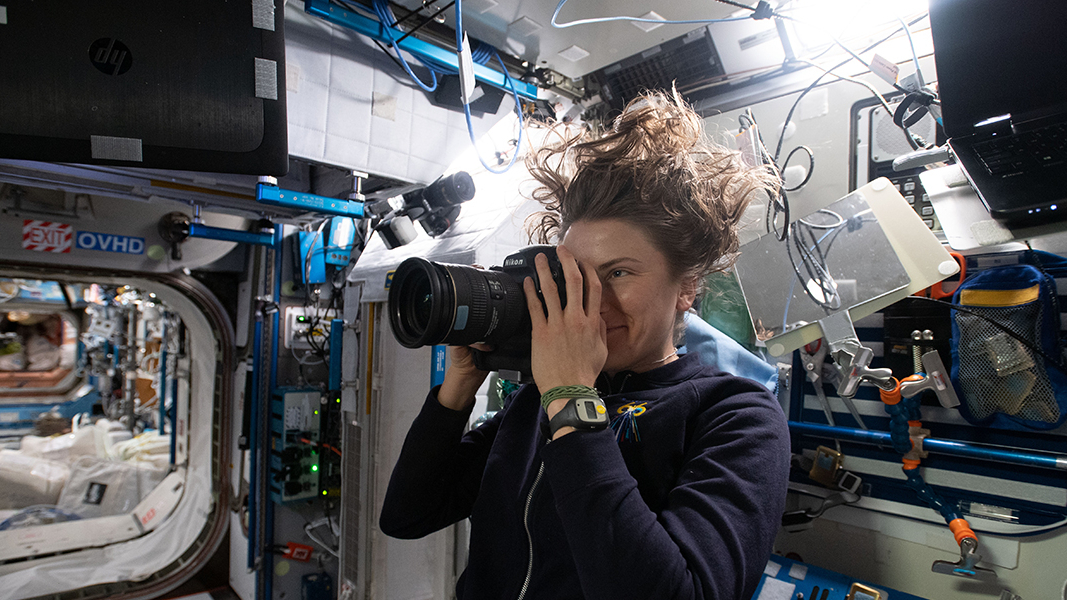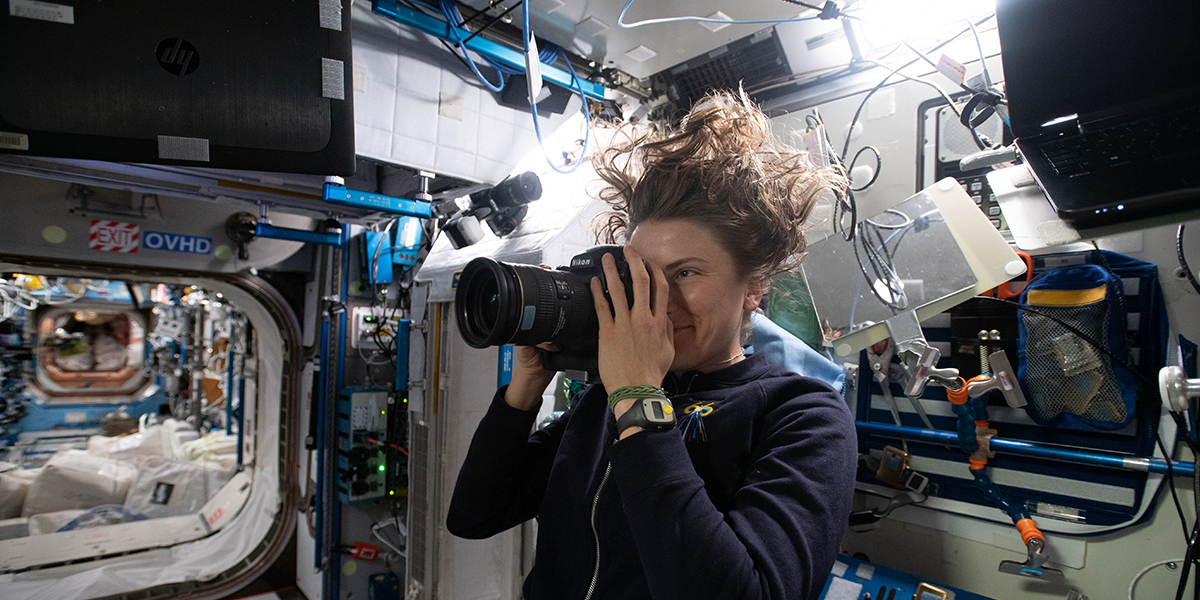'Astronaut archaeology' could improve space station design. Here's how
'You can think of it as an off-planetary equivalent of excavating a pit.'

Why take cake frosting to a space station, in a microgravity environment where bread cannot rise?
Space mysteries like this abound in a new International Space Station (ISS) study, and the answers may help inform future space habitat design and crew training.
A 60-day archaeology investigation in 2022 aimed to see how astronauts use the orbiting lab. The ISS is roughly the size of a six-bedroom house, NASA says. It typically hosts between three and seven astronauts at the least, from countries all around the world.
Like any multinational expedition in a remote environment, the astronauts need to call upon creativity, patience and training to stay safe and get their research work done. That's where the cake frosting came in.
Related: Firefly Aerospace uses rocket engine to light birthday candles in epic cake video
Curious archaeologists here on Earth noticed tubes of cake frosting in astronaut photos of the galley in the station's Unity module. The archaeologists wondered what the frosting could possibly be used for in orbit, so they set out to solve the mystery. Turns out the astronauts repurposed the tubes: to celebrate Russian cosmonaut Pyotr Dubrov's birthday, Barron and NASA astronaut Thomas Marshburn created an adapted "cake" using premade muffins, along with honey and the frosting.
"This activity highlights how food preparation is a key vector for reinforcing social relations, even in space," stated Justin Walsh, co-investigator of the Sampling Quadrangle Assemblages Research Experiment (SQUARE), in a release Monday (Oct. 16) from the University of Southern California or USC.
Breaking space news, the latest updates on rocket launches, skywatching events and more!
The research is named after literal squares placed on the ISS to track crew activity. NASA astronaut Kayla Barron taped the first of six quadrangle areas on the ISS in January 2022, during the Expedition 66 mission. Periodic pictures of each yellow-squared area in the two months following allowed archaeologists on Earth to keep track of how the astronauts are using each square.
Related: 'Space archaeology' research on the ISS will help design better space habitats
The SQUARE method is inspired by a basic but well-tested archaeological technique: the test pit. When digging in locations on Earth where it is not yet feasible or appropriate to do a large-scale survey, archaeologists may choose to burrow in a small square and carefully keep track of each item that comes out, by soil layer and by location.
"You can think of it as an off-planetary equivalent of excavating a pit," added Walsh, a fellow at USC's space engineering research center. The other co-investigator for SQUARE was Alice Gorman, a professor at Flinders University in South Australia who specializes in space archaeology.
The six locations taped off in the ISS included:
- The galley table in Node 1, Unity;
- The starboard workstation in Node 2, Harmony module;
- The wall across from the toilet (waste and hygiene compartment) in Node 3, Tranquility module;
- The science rack on the forward wall of the Japanese Kibo module;
- The science rack on the forward wall of the European Columbus module;
- A rack on the port side of the U.S. Destiny module (the crew's choice).
"The investigators have chosen sample sites on the space station that seem likely to be locations where lots of activities are happening, with objects moving in and out of the sample sites on a regular basis. Crew are asked to identify one more area for sampling based on their own understanding of current activities," the official experiment description reads.
"At the core of this research is a focus on different kinds of material culture — that is, objects and built spaces, together with their symbolic and social meanings," the description added. In addition to what this research reveals about culture, it aims to help "future spacecraft designers understand exactly how different objects and space are used over time," which would improve habitats.
Related: Boom! Watch an inflatable space habitat explode during testing (video)
ISS crew members were required to take pictures daily at the exact same time for 30 days, and then continue for another 30 days with daily photos at scattered intervals. And that process, even though it took place over a small amount of time, revealed a lot of surprises.
Aside from the cake mystery, the archaeology team found the Harmony workstation didn't end up being used for repairs — rather, it was mostly used for storage. (Anyone who has repurposed an exercise bike as a clothing rack on Earth might be sympathetic.)
Just 12% of the area was devoted to its primary use for maintenance tools, the picture record showed. By contrast, more than a third of the space (35%) was taken up by clips, adhesive tape, cable ties and other "gravity surrogates" to hold items in space. And the majority of the workspace was otherwise taken up with storing unrelated items.
Since the off-planet "pegboard" ended up being used for unanticipated things, the hope is that space habitats of the future "will be better equipped to optimize the design of maintenance spaces based on documented behaviors. leading to greater efficiency and possible payload reduction," USC officials said in the same statement.
The investigation also shed some light on international crew relations in a remote environment. For example, the personal-hygiene cases of both German and U.S. astronauts had Russian-branded dry wipes inside.
This is classed as a "culture of exchange" and also shows that the crews are continuing to work together in ways large and small since Russia's unsanctioned and ongoing invasion of Ukraine beginning in 2022, which severed most Russian space partnerships aside from its ISS cooperation. (NASA is continuing under senior U.S. policy advice and has emphasized that operations on the station continue as usual.)
While the experiment is finished, archaeology analysis is ongoing. Related studies with team members have included peer-reviewed research on cargo "artifacts" being shipped to Earth from the ISS, tracking the movements of astronauts in the large facility and the display of "space heroes" and Orthodox icons in the Russian Zvezda module.

Elizabeth Howell (she/her), Ph.D., was a staff writer in the spaceflight channel between 2022 and 2024 specializing in Canadian space news. She was contributing writer for Space.com for 10 years from 2012 to 2024. Elizabeth's reporting includes multiple exclusives with the White House, leading world coverage about a lost-and-found space tomato on the International Space Station, witnessing five human spaceflight launches on two continents, flying parabolic, working inside a spacesuit, and participating in a simulated Mars mission. Her latest book, "Why Am I Taller?" (ECW Press, 2022) is co-written with astronaut Dave Williams.


